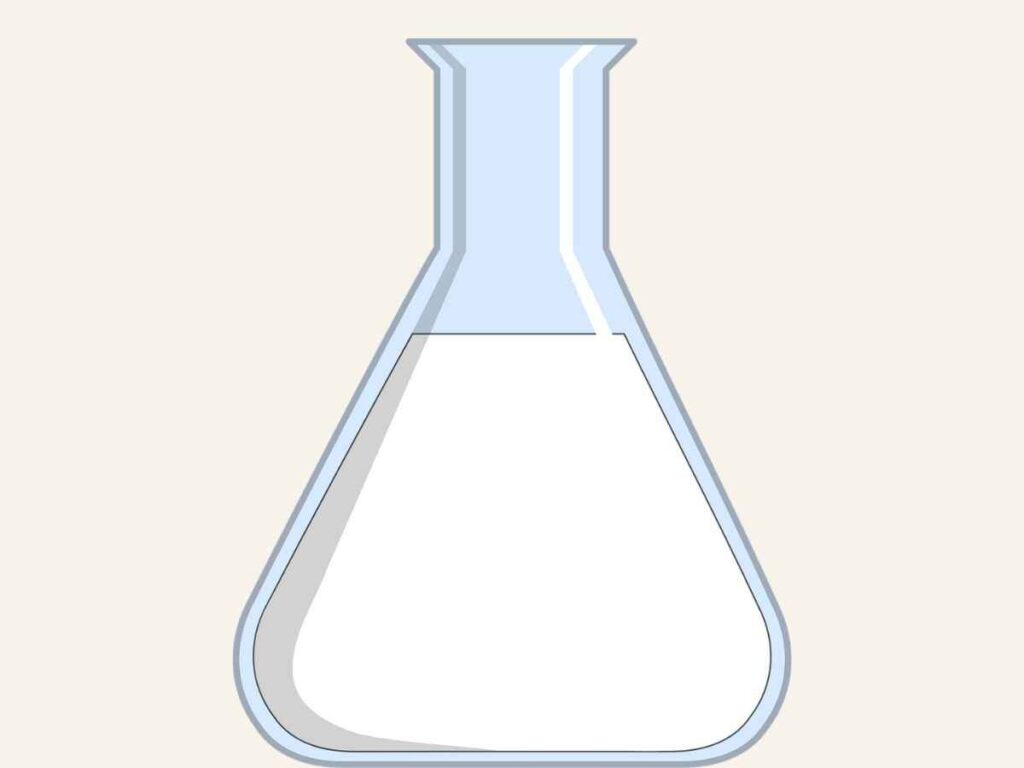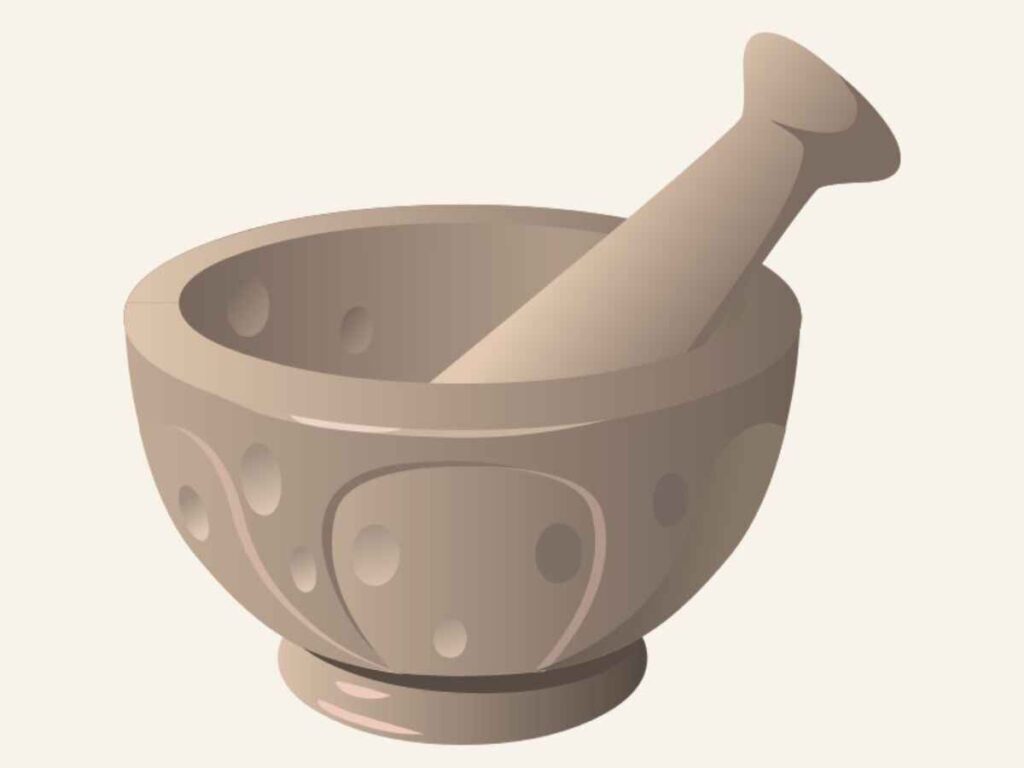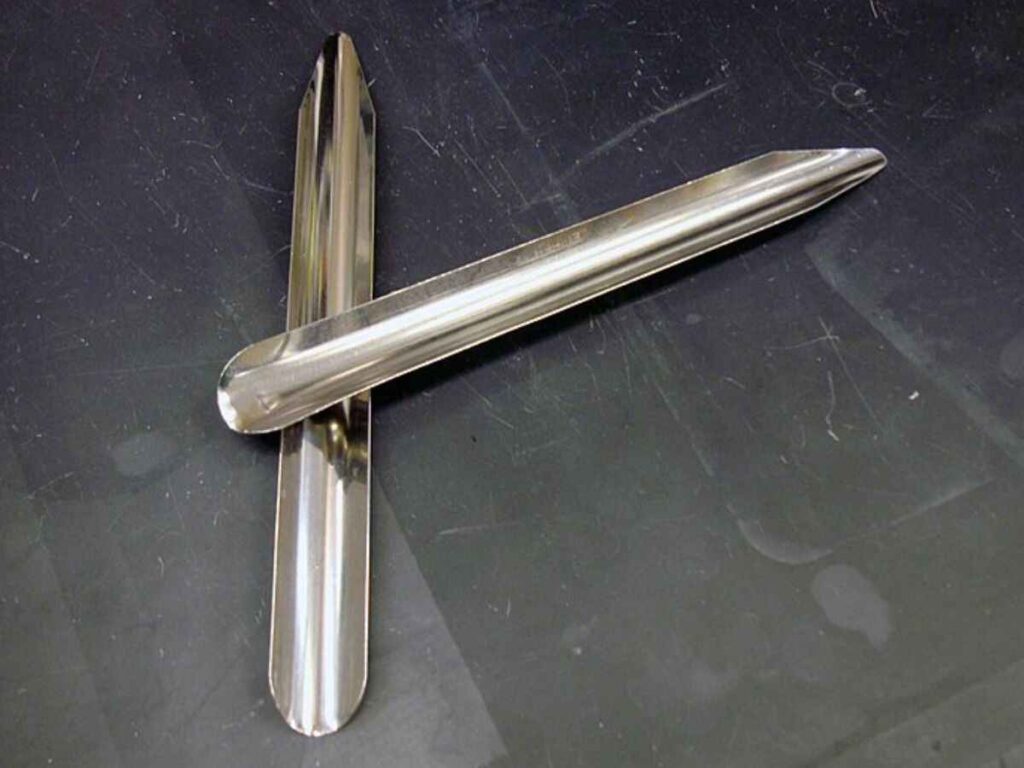Discover the essential Chemistry Laboratory Apparatus and their Uses with Pictures PDF in this comprehensive guide. Learn about various tools and their functions in the lab.
Download the Chemistry Laboratory Apparatus and their Uses with Pictures PDF for easy reference and enhance your understanding of chemistry equipment today.



Do you ever wonder what each of the cool tools in a chemistry lab is for? Well, you’re in for a treat! Below, we take a look at some of the key tools commonly seen in science laboratories and detail what each one is used for.
And the best part is that you can download this amazing Chemistry Laboratory Apparatus and their Uses with Pictures PDF so as to get images of all these tools which will help you remember everything better than ever!

There are many cool features present in chemistry labs, which go from beakers to test tubes each with its specified duty.
It keeps the experiments reliable, amusing and full of realization. So, by understanding such tools it helps scientist to do various wonderful experiments just the way you can expected in future!
Download Chemistry Laboratory Apparatus and their Uses with Pictures PDF With our chemistry laboratory apparatus uses pictures pdf, you will get the names of all these tools used there in tad or so school labs.

Prepare yourself to discover the realm of science and be a pro in laboratory equipment! This guide has you covered, whether your interest is in Bunsen burners or microscopes or graduated cylinders.
And finally do not miss out on your free Common Chemistry Laboratory Apparatus and Their Uses with Pictures Pdf for easy reference. THE EASY FUN SCIENCE… OR SO!!!
- Chemistry Laboratory Apparatus and their Uses with Pictures
- Essential Chemistry Laboratory Apparatus and Their Uses with Pictures
- Understanding Chemistry Laboratory Apparatus and Their Uses with Pictures
- Key Chemistry Instruments Every Student Should Know with Pictures
- Download: Chemistry Laboratory Apparatus and Equipment and their Uses with Pictures PDF

Chemistry Laboratory Apparatus and their Uses with Pictures
Chemical laboratories contain several wondrous tools used to perform experiments on matter, investigate nutrients and substances as well as express chemical phenomena. It is essential for students to the professional world of chemistry and beyond to possess an intimate understanding of how these tools function, both correctly utilized.
- Beakers
- Flasks
- Pipettes
- Test Tubes
- Burettes
- Spatulas and Scoops
- Hot Plates and Burners
- Centrifuges
- Balance Scales
- Safety Equipment

Knowing how to operate these pieces of equipment will not only expedite your laboratory completion, but also make you a better student by making concepts more tangible. All Chemistry Lab workers should be well-trained and follow all safety regulations accurately.
Essential Chemistry Laboratory Apparatus and Their Uses with Pictures
Chemistry is a very interesting subject which deals with the experiments, reactions and scientific discoveries. All these experiments are carried out using a very valuable piece of equipment, which can be found in each chemistry laboratory.
This is fundamental for students, researchers and anyone interested in the world of chemistry. We will go through the basic chemistry laboratory apparatus with uses in this extensive list.

In addition to visuals of these tools, as we go along with each tool photo you will discover what they look like and how they can be found in the lab.
Chemistry Laboratory Apparatus and their Uses with Pictures
1. Beaker
In any chemistry lab, a beaker is one of those equipment that would most probably use (if not all -due to the widening variety).
An unornamented, circular object with a smooth bottom, typically of glass or plastic Resembling a cup, beakers are simple containers used to hold liquids that you mix and heat.
They range in size, have measurement lines but are not by any means accurate measuring instruments. Beakers are used in a lot of chemistry experiments and they can be easily cleaned.
Uses:
- Holding and mixing chemicals
- Heating liquids
- Performing reactions

2. Test Tube
They are small, round bottomed and open topped glass tubes. They are very common tools used in laboratories to perform minor reactions, heatchemicals or collectgases.
Test tubes are perfect for experimentation they allow observation of chemical reactions on a small scale, yet in controlled conditions.
Uses:
- Conducting experiments
- Small Scale Substance Heating
- Storing samples

3. Graduated Cylinder
A graduated cylinder is a long, narrow container with ruler-like markings along the side. Unlike beakers they are meant for accurately measuring the volume of liquids.
Graduated cylinders: these are more accurate tools for measuring liquid quantities and as such, when precision is needed they become crucial.
Uses:
- Accurate Liquid Volume Measurement

4. Erlenmeyer Flask
Erlenmeyer flask — Shaped like a cone with one side open, you can distinguish Erlenmeyers by their flat bottom and wide upper neck.
This design ensures the flask can hold liquids thoroughly without spilling them, especially during stirring or shaking of their contents. The narrow neck which as well minimizes evaporation.
Uses:
- Mixing and storing solutions
- Heating liquids
- Carrying out titration experiments

5. Bunsen Burner
However, What I found was that it is a small gas burner which can be used in laboratories. It has a sing open flame (for heating, sterilizing and combustion).
Variations in this flame allow heat levels to be adjusted for experiments. Bunsen burners are one of the most well-known tools in any chemistry laboratory.
Uses:
- Heating substances
- Sterilizing equipment
- Conducting combustion experiments

6. Pipette
Pipettes These are used for dispensing small volumes of liquid from one container to another. They range in size, ranging from volumetric pipettes (which calorie measure) to dropperscreatures.
Many experiments require the accurate handling of liquids, and great pipetting is part of that precision.
Uses:
- Handling small volume liquids
- Measurement of Precise Liquid Amounts

7. Burette
Laboratory glassware : Burette – Used for titration experiments It is provided with a stopcock at the bottom to release liquids in click.
Burettes are highly accurate and a requirement to measure down the reaction point of titration.
Uses:
- Determining Output of Liquids in Titration
- Controlled liquid dispensing

8. Mortar and Pestle
A mortar is a bowl that paired with the pestle, which is club-shaped tool used to grind and mix substances. It is commonly used to grind materials in solid-state for cycle-catalyzed grinding reactions or when ultra-fine wet mixes are required.
Uses:
- Milling Chemicals from Chips to Powder form.
- Mixing ingredients

9. Crucible
A crucible is a small, temperature resistant container in which substances are heated to very high temperatures.
These wares, usually made of porcelain or platinum but also graphite (in esp. Crucibles are frequently made use of in conditions where very high temperatures are called for, e.g., melting metals.
Uses:
- Raising media temperature to high
- Combustion Reactions

10. Watch Glass
Watch glass is a small, convex piece of low-power lens that can be used as a surface for evaporation or drying; they are also useful under the crystallization process. Comes by the thing called “watch glass” for resembling a pocket watch’s cover shape.
Uses:
- Evaporating liquids
- Small qty solids holding
- Placing lids on beakers to prevent contamination

These may also help you:
Biochemistry Analyzer Uses and Principle: A Comprehensive Guide
Variation of Conductivity and Molar Conductivity with Concentration
Structure of Atom Class 11 PPT
Understanding Chemistry Laboratory Apparatus and Their Uses with Pictures
1. Funnel
Funnel: A funnel is a piece of equipment that you use to pour liquids or powders (often chemicals) into another container without making any mess. Funnels are frequently used in chemistry to separate a liquid from solids by filtration.
Uses:
- Dispenses liquids or powders without spilling
- When with regarding filter paper, filtration

2. Tongs
Tongs are a type of gripper and used to grasp hot things like beakers or crucibles that have been heated over a flame. It Allows the Handling of Hot Laboratory Apparatus Without Risking Burns or Spills
Uses:
- Handling hot equipment
- Holding crucibles or beakers

3. Thermometer
In experiments, a thermometer is used to get the temperature of liquids (for example, water), gases or solids. Glass laboratory thermometers filled with mercury or alcohol expand and contract based on temperature, providing an accurate visual reading.
Uses:
- Reaction or heating temperature detection
- Heat Monitoring Experiments

4. Volumetric Flask
Volumetric flasks: these are used to make up standard solutions of known volume. They feature right up the marks of various Derterminion flasks which guarantee they are huge for providing an precise concentration and frustration to create their structure concentric.
The neck is slender and at the top, there is a stopper that allows you to shake up your content while ensuring no spillage as well.
Uses:
- This involves preparing solutions with exactly defined concentrations
- Chemical experiments and mixtures

5. Balance (Scale)
Mass of substances is measured in a balance or scale. During quantitative chemistry experiments, these other sorts of balance provide accurate measurements that are necessary.
Uses:
- Chemical or Substances: Mass
- Maintaining stoichiometry in reactions

6. Clamp Stand (Retort Stand)
Support Equipment: To hold the test tubes, flasks or burettes in position, an apparatus known as a clamp stand (or retort stand) is used to facilitate this task.
Of course, the stand can also be used with clamps to lock down our setup in one spot and freeing up both of your hands for more complicated experiments.
Uses:
- Securing of laboratory equipment
- Auxiliary equipment during experiments

7. Desiccator
A desiccator is simply a containment unit, able to store chemicals in a dry and required condition. It includes a drying agent which will prevent moisture from getting in and keep the stored substances hydrated or spoiling.
Uses:
- Keeping chemicals in dry place
- Drying substances

8. Dropper
A dropper is a tool used to add small amounts of liquid, one drop at a time. It has applications in experiments needing control over small amount of liquid required to add it into a solution.
Uses:
- You can add a little bit of liquid two ways
- Controlling liquid dispensing

9. Scoopula
Scoopula: a small metal or plastic scoop used to transfer solid chemicals from one container to another. Especially when dealing with powders and small granular materials in the laboratory.
Uses:
- Transferring solid chemicals
- Handling powdered substances

10. Tripod Stand
A tripod stand : A three-legged piece of equipment that supports containers over a Bunsen burner or other heat source. Usually a wire gauze is placed on top to ensure that the heat is spread over the container evenly.
Uses:
- Containers for warming support
- Distributing heat evenly

It is essential to understand the chemical laboratory equipment and their use so that we can carry out a successful experiment while staying safe in your lab.
These are tools of your arsenal and while you may never do research exctly as I do, understanding the proper use will make your journey through chemistry easier.
The descriptions and what they do are much more helpful to understanding how these items operate in the lab than pictures.
No matter what you are studying, if you need to measure ingredients, heat substances or combine materials chances are good that cleanliness is step one but the right tools also go a long way for smooth operation and safety.
Key Chemistry Instruments Every Student Should Know with Pictures
It is always useful to have a reference guide for common chemistry laboratory apparatus! A quick Google search of “Chemistry laboratory apparatus and their uses with pictures pdf” will lead you to a comprehensive list with clear images.
These guides make you remember the tools and its reading which helps in good performance of your Chemistry experiments.
1. Safety Goggles
Safety first! These goggles protect your eyes from any of the hazardous things in lab like chemicals, heat etc. Be sure to always wear them, especially performing experiments.
Use:
- Eye protection.
2. Wire Gauze
Wire Gauze – a metal screen placed over a Bunsen burner to hold Beakers or FlasksHeat source. It will encourage the heat to even itself out across all areas and any glass won’t tend to split.
Purpose:
- To support and protect beakers when they are heated.
3. Stirring Rod
A stirring rod is a long and thin glass or metal piece that is used to stir chemicals. It is elementary but, it can mix solutions evenly and without spillage.
4. Lab Coat
A lab coat is a form of protective clothing that saves your outfit from spills and splashes of chemicals. It is a quintessential in every chemistry lab.
5. Filter Paper
According to this, the solid particles present along with the liquids can only be filtered by using filter paper and now what it is? The liquid will then go through the funnel, and the solid is trapped.
6. Evaporating Dish
Evaporating Dish: an evaporating dish is used to heat and let the vapour out of the liquid. It is oven-safe and is constructed from porcelain.
7. PH Meter
A pH meter is a device that measures the acidity and alkalinity of a solution. A pH meter provides a digital reading of the specific pH, rather than relying on indicator paper.
8. Test Tube Holder
Its use as a test tube holder (these things let you hold test tubes. If they are too hot for you to grab them with your bare hands, that is) They are generally metallic or plastic.
9. Centrifuge
A centrifuge is a piece of equipment that spins samples at high speeds, causing things to separate out according to their density. It is commonly used to separate a system with different phases such as separating liquids from solids or one liquid from the other.
10. Gas Syringe
Gases are measured with the help of gas syringe. The top of the cell has a sliding piston to monitor how much gas is being captured or expelled.
11. Petri Dish
A petri dish is shallow, round glass of plastic dish used for them with a lid to cover the ones that we are working on.
12. Distillation Flask
Distillation It consists of a flask called the distilling flask or pot, fragrant product enters it then when we heat to create vapor, and this vapor pass through the column into the condenser to cool down until it convert back again into a liquid.
13. Titration Flask
Titration flask — for use in a titration and usually used in conjunction with a buret to measure the concentration of a solution.
14. Litmus Paper
Color change using litmus paper to test the acidicor basic nature of a solution. The pH of the solution affects its color.
The proper tools in a chemistry lab are what makes the experiment go smoothly, accurately, and safely. Knowing what each piece of equipment is and is for makes you look more scientific! Students must learn these tools the way small children do in order to play with chemistry.
A handy guide or document with all these instruments is always helpful and may be something like a “Chemistry Laboratory Apparatus and their Uses with Pictures pdf.” This resource will help you prepare for lab classes and serve as a fast reference to the tools you will use.
After reading about these 30 main chemistry devices, you will feel more in control and confident when it comes to your lab skills and experimental work.
Knowing why and how to use these devices is essential for obtaining success in your chemistry class. Knowing these basic tools, you should feel much more comfortable when working in the lab now!
As always, these are tools after all so take care of them and be sure to wear your safety goggles!! Happy experimenting!
Download: Chemistry Laboratory Apparatus and Equipment and their Uses with Pictures PDF
Grab our required and basic Chemistry Laboratory Apparatus and their Uses with Pictures PDF list for a more authoritative laboratory tools reference.
Comes with a detailed information and images of all the important instruments that you will need for your experiments. Great for students– anyone else learning in the lab. Get your free copy today!
You can also download the Chemistry Laboratory Apparatus and their Uses with Pictures pdf from here:
I hope the article ‘Chemistry Laboratory Apparatus and their Uses with Pictures PDF’ is helpful for you! It’s designed to make learning about lab equipment fun and easy, with clear explanations and visuals to guide you. If you have any questions or need further details, feel free to reach out!
